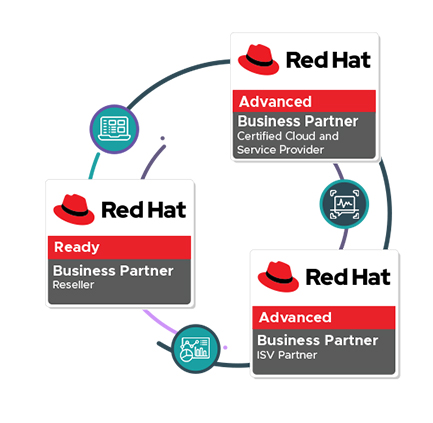In the ever-accelerating world of DevOps, time is the one resource you can’t
afford to mismanage. So, when someone inevitably asks, “How long should
OpenShift cluster provisioning take?” you’d think there’s a straightforward
answer. But here’s the truth: it depends.
Now, don’t roll your eyes. That’s not a consultant’s cop-out or a vague deflection. It’s a reality shaped by infrastructure complexity, tool maturity, team readiness, and, let’s be real, how many moving parts are trying to talk to each other on a Monday morning.
Let’s dig into what affects the timeline and how you can speed it all up without cutting corners.
OpenShift cluster provisioning isn’t a monolithic checklist. There’s no magical “Provision” button (yet). But with the right combination of technologies and practices, you can get surprisingly close.
Thanks to tools like OpenShift Virtualization and HyperShift, what once took days or even weeks can now take just hours or even minutes. HyperShift, in particular, enables hosted control planes that run as workloads. Translation? Your clusters spin up faster, scale better, and are a lot easier to manage.
In ideal conditions, with a clean infrastructure slate and automation dialed in, provisioning a production-ready OpenShift cluster might only take 30–90 minutes. In more complex environments, it can stretch to a day or two. The key is minimizing friction, and that starts with understanding your architecture.
Several elements can affect how quickly you can provision an OpenShift cluster:
If you want to make OpenShift cluster provisioning faster and more reliable, follow these field-tested strategies:
OpenShift Virtualization, based on the KubeVirt project, allows you to run and manage virtual machines alongside containers on the same platform. This integration simplifies the provisioning process by providing a unified infrastructure layer. It also enables features like live migration, snapshots, and cloning, which can be invaluable during provisioning and scaling.
Imagine you’re tasked with setting up a new OpenShift cluster for a development team. Using OpenShift Virtualization and hosted control planes, you can:
By following this approach, you can have a fully functional OpenShift cluster ready for the development team in a fraction of the time traditional methods would require.
Provisioning an OpenShift cluster doesn’t have to be a lengthy or complex process. With the right tools, practices, and expertise, you can streamline the process and reduce setup times significantly. Embracing automation, leveraging OpenShift Virtualization, and adopting GitOps practices are key to efficient provisioning.
When it comes to OpenShift cluster provisioning, hSenid Mobile doesn’t just follow best practices, they help define them.
Through their eDevOps Services, hSenid Mobile Solutions supports the full DevOps lifecycle from rapid provisioning and CI/CD implementation to automation and infrastructure optimization. They leverage Red Hat-certified tools, including OpenShift Virtualization and Ansible, to ensure your deployments are fast, scalable, and rock-solid.
Their CI/CD Pipeline Services accelerate application delivery, while Red Hat Provisioning Services simplify cluster setup, resource configuration, and environment management. They bring strategic insight and technical firepower, whether you’re deploying a single dev cluster or rolling out at enterprise scale.
With Ansible-powered automation, their approach helps businesses build infrastructure that grows with them. It’s not just about speed, it’s about delivering consistent, secure environments every time.
Whether you’re just exploring OpenShift or knee-deep in a multi-cloud rollout, choosing the right partner can make all the difference.
Now, don’t roll your eyes. That’s not a consultant’s cop-out or a vague deflection. It’s a reality shaped by infrastructure complexity, tool maturity, team readiness, and, let’s be real, how many moving parts are trying to talk to each other on a Monday morning.
Let’s dig into what affects the timeline and how you can speed it all up without cutting corners.
OpenShift Cluster Provisioning: The Realistic Timeline
OpenShift cluster provisioning isn’t a monolithic checklist. There’s no magical “Provision” button (yet). But with the right combination of technologies and practices, you can get surprisingly close.
Thanks to tools like OpenShift Virtualization and HyperShift, what once took days or even weeks can now take just hours or even minutes. HyperShift, in particular, enables hosted control planes that run as workloads. Translation? Your clusters spin up faster, scale better, and are a lot easier to manage.
In ideal conditions, with a clean infrastructure slate and automation dialed in, provisioning a production-ready OpenShift cluster might only take 30–90 minutes. In more complex environments, it can stretch to a day or two. The key is minimizing friction, and that starts with understanding your architecture.
Factors Influencing Provisioning Time
Several elements can affect how quickly you can provision an OpenShift cluster:
- Infrastructure Readiness: Are you deploying on bare metal, virtual machines, or cloud platforms? Each has its own setup time.
- Automation Tools: Utilizing tools like OpenShift GitOps (ArgoCD) and Red Hat Advanced Cluster Management can significantly reduce manual intervention.
- Team Expertise: A seasoned team familiar with OpenShift can navigate the provisioning process more swiftly than a team new to the platform.
- Network Configuration: Proper DNS setup and network configurations are crucial. Misconfigurations can lead to delays.
Best Practices to Provision Smarter, Not Slower
If you want to make OpenShift cluster provisioning faster and more reliable, follow these field-tested strategies:
- Automate Everything You Can: Infrastructure as Code (IaC), CI/CD pipelines, and scripted installs automate the repeatable and reserve your engineers’ brainpower for edge cases.
- Use Hosted Control Planes: With HyperShift, you get hosted control planes that free you from tying control and compute together. It’s like unclogging a bottleneck before it starts.
- Adopt GitOps: GitOps isn’t just a buzzword. Managing configuration declaratively through Git ensures consistency, auditability, and rollback capability, all while boosting provisioning speed.
- Measure, Monitor, Improve: Provisioning isn’t fire-and-forget. Use observability tools to track deployment metrics and identify bottlenecks. Treat your provisioning pipeline like any other performance-critical system.
The Role of OpenShift Virtualization
OpenShift Virtualization, based on the KubeVirt project, allows you to run and manage virtual machines alongside containers on the same platform. This integration simplifies the provisioning process by providing a unified infrastructure layer. It also enables features like live migration, snapshots, and cloning, which can be invaluable during provisioning and scaling.
Real-World Example: Provisioning with OpenShift Virtualization
Imagine you’re tasked with setting up a new OpenShift cluster for a development team. Using OpenShift Virtualization and hosted control planes, you can:
- Prepare the Infrastructure: Set up the necessary virtual machines or bare metal servers.
- Deploy the Control Plane: Use HyperShift to deploy the control plane as a workload, reducing setup time.
- Configure Networking and Storage: Ensure that DNS, networking, and storage are properly configured.
- Automate with GitOps: Apply cluster configurations using GitOps practices, ensuring consistency.
By following this approach, you can have a fully functional OpenShift cluster ready for the development team in a fraction of the time traditional methods would require.
Conclusion
Provisioning an OpenShift cluster doesn’t have to be a lengthy or complex process. With the right tools, practices, and expertise, you can streamline the process and reduce setup times significantly. Embracing automation, leveraging OpenShift Virtualization, and adopting GitOps practices are key to efficient provisioning.
Why hSenid?
When it comes to OpenShift cluster provisioning, hSenid Mobile doesn’t just follow best practices, they help define them.
Through their eDevOps Services, hSenid Mobile Solutions supports the full DevOps lifecycle from rapid provisioning and CI/CD implementation to automation and infrastructure optimization. They leverage Red Hat-certified tools, including OpenShift Virtualization and Ansible, to ensure your deployments are fast, scalable, and rock-solid.
Their CI/CD Pipeline Services accelerate application delivery, while Red Hat Provisioning Services simplify cluster setup, resource configuration, and environment management. They bring strategic insight and technical firepower, whether you’re deploying a single dev cluster or rolling out at enterprise scale.
With Ansible-powered automation, their approach helps businesses build infrastructure that grows with them. It’s not just about speed, it’s about delivering consistent, secure environments every time.
Whether you’re just exploring OpenShift or knee-deep in a multi-cloud rollout, choosing the right partner can make all the difference.








